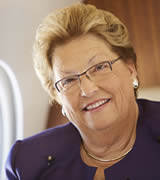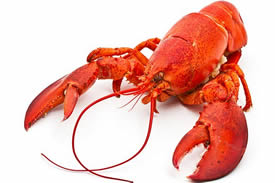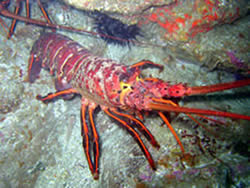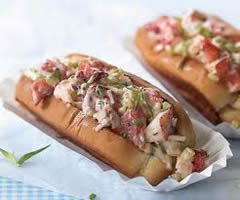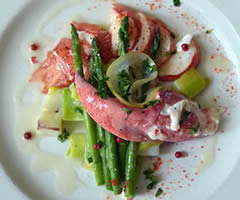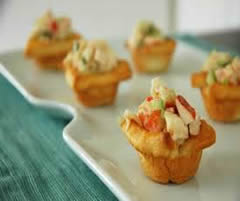| BlueSky Business Aviation News | ||||||||||||||||||||||||||
| . | ||||||||||||||||||||||||||
Lobster, one of the restaurant industry’s iconic marine creatures, has landed on the 'most decadent foods' list. What do you really need to know if ordering lobster from your aviation food source? Today, lobster may be considered one of the world’s top 10 delicacies, but not so many years ago lobster was associated with food for the poor, for servants, for prisoners in jail, and was even a soldier’s staple ration eaten out of a can in the foxholes of France during World War II.
I can’t resist sharing a bit of history trivia with you about how lobster went from poor man’s trash food to be on the top 10 delicacies list As the early settlers began settling the Massachusetts Bay Colony in the 1600’s, they discovered huge piles of lobsters washing up on shore. These “trash” fish were so common - and therefore very cheap - that they were the staple food for the poor, for servants and for those incarcerated in prisons. It's said that many of these colonists revolted and that the colony was forced to sign contracts promising that indentured servants wouldn’t be fed lobster more than three times a week. Even up until the 1940’s canned lobster could be purchased for 11 cents a pound. Can you imagine that? So how did lobster move up in the world? Basically, it worked like this: As the railway started to expand through America, there was a need for a cheap canned meat source. The further from the ocean the trains went, the less knowledgeable were the passengers about the lobster's "trash fish" reputation. The train companies served it to them as a rare, exotic item, even though it was very cheap for those running the railroad to procure. Inland passengers were intrigued. Lobster was delicious. Passengers started to ask for it even after they left the train. By the 1950's lobster was firmly established as a delicacy; Lobster seemed to taste better because it was so expensive; lobster was something movie stars ate when they went out to dinner. It was the sort of thing wealthy families ordered for weddings, something the Rockefellers would serve at their parties. In short, lobster became posh. A delicacy only a step or two down from caviar.
Ok, back to lobster for our private jets. If your food source has properly cooked the lobster for you (when overcooked the flesh will have shrunk, become tough, and lack sweetness. On the other hand, undercooked lobster will be soft and gooey), the lobster will display a flaky meaty texture and carry a mild, sweet flavor. It should be firm to the bite, but, not chewy or rubbery. It should feel like velvet in your mouth. I was fortunate to sample a poached lobster tail at Eten Inflight Catering in Ft. Lauderdale recently, cooked to perfection. It was poached in a court bouillon and a good drinking wine for just minutes and allowed to continue to cook by resting in the hot bouillon. Amazing as he took this tail meat and created an irresistable lobster salad. Sexing lobsters! If you order two lobsters and they arrive at the aircraft slightly different in texture or taste, it may be due to their sex. Yup, sex! Male lobsters have more compact, meatier flesh, while female lobsters are known to have a more tender subtle flavor. This does not mean you can order male and female lobster for your flight however. If you can locate a catering source that can actually go to the docks nearby and check for their gender, the difference can be seen by looking under the tail of the lobster. All lobster have feathery appendages called swimmerets, the first pair of swimmerets (the pair closest to the head) are soft on a female, but hard and bony on a male. Many catering sources purchase the tails only or claws and tails in a certain weight to cook for aircraft as the entire lobster, shell and all, might prove very challanging and messy to dismember on board . . . not to mention the residual smell left on the aircraft. Preparation and Method Rita’s Inflight Catering of Boston is famous for their preparation and delivery of whole steamed lobsters for aircraft. They prepare the lobster for easy eating on board, but you must make sure that the catering source you select is able to do this. The claws can be presplit, the tail cut open, and the stomach and intestine removed. Lobster, like all shellfish, require immediate refrigeration or definitely within an hour after cooking to keep it safe for eating at a later meal. Lobster that is purchased from a catering source (to be reheated ) will need some form of moist heat - steam, simmering, baking covered with liquid, to hold as much of the moisture as possible during the heating process. The lobster meat can even be added to a sauce for reheating to help it retain its tenderness and moisture. If reheating on board, the time and temperature needed should be carefully monitored to prevent overcooking. Reheat lobster by adding a small amount of water or wine to your covered foil tin or aluminum foil and bake until it simmers, about 18-20 minutes for a cracked whole lobster, 5-6 minutes for claw and tail meat. Test the temperature of the lobster meat and verify that the meat has reached 165 °F. If you are front loading catering and wish to hold lobster, it can be remain fresh for up to two days in a cold refrigerator, but for longer-term storage, it should be frozen. A simple way to freeze whole lobster or the pulled meat is to place the lobster in a zipper freezer bag and fill the bag with water and freeze. To thaw the lobster, allow it to defrost in the refrigerator overnight at the FBO. Believe it or not, there are cooking methods that work best at different times of the year. Broiling or grilling lobsters is best done from fresh caught lobsters from mid-may to late June, and mid-October through December, when lobsters are hard shelled. Request lobsters two pounds or less to broil or grill as the additional cooking time for ones larger will leave them charred, dried out, or tougher, and the flesh will have lost moisture and shrunk. The advantage to broiling lobsters this time of the year is that the butter (oops, I forgot to mention you’ll need lots of butter when lobster is served hot) will revive some of the flavor of the softer, more juicy lobster flesh. As Dirk De Cuyper at Eten Inflight Catering tells me, the butter, if clarified, will add that velvety sweetness (not sugary) taste that may be lost in cooking. The best time to boil a lobster is from July until mid-September. At this time of year you are likely to find softer shell lobster and these will work the best for partial precooking. Boiling a lobster makes the meat easy to lift out of the shell; it stays moist and often is a sweeter meat. A boiled partially-cooked lobster can be broiled, or grilled to finish. For a simple steamed or boiled lobster, don’t forget a bottle of chardonnay or white burgundy, or try something unconventional such as a Spanish wine from the northwest corner of Spain’s fishing village named Galicia – Albarino is a wine built for shellfish. Menu Suggestions
Allow your passengers to indulge and savor the pearly white flesh of a chilled lobster and claw salad with the lightest of dressing and a wonderful bottle of wine on their next flight. Bon appetite! About Paula Kraft . . . Paula Kraft is the founding partner of the DaVinci Inflight Training Institute located in Fort Lauderdale, Florida and the founder/president of Tastefully Yours Catering, an aviation specific caterer, located in Atlanta, Georgia for over 35 years. Paula is active with many aviation and catering-related groups including the International Caterers Association, the International Inflight Food Service Association and is a board member of Women in Corporate Aviation. She is the past chair of the NBAA Flight Attendant Committee Caterer’s Working Group for 15 years perfecting unique catering training sessions for NBAA conferences and events. Currently, she serves on the NBAA Flight Attendant Advisory Committee and is a member of the Training and Safety Subcommittee. Paula was a founding member of the Steering committee for the creation of a European Flight Attendant Committee and conference and serves as a subject matter expert to the board of International Standard for Business Aircraft Handlers (IS-BAH). From Paula . . . I have coordinated training programs and clinics for NBAA and EBAA conference attendees for over 10 years, created mentoring programs for caterers and flight attendants to broaden their aviation culinary skills, and to assist them in adapting to the unique challenges and constraints found in catering for general aviation. I recognize the need for training and have worked closely with flight departments, flight crews, schedulers and customer service reps at the FBOs to ensure that catering specific training provides information and skills necessary to reduce risk while assisting them in their job duties that include safe food handling, catering security, accurate transmission of food orders, and safe food production, packaging and delivery. I fell into aviation catering quite by accident. I was the in-house caterer and bakery supplier for Macy’s department stores in Atlanta when catering was ordered for a Macy’s customer which was soon to change my life. After the client enjoyed the catering provided, I was summoned to the client’s corporate office to provide several of the items delivered through Macy’s to the executive dining room. Within a week, I was providing food for the flight department and my first order was for the President of a foreign country (as I was too be told soon after). So, here I am, some 35 years later, still loving every minute of every day in aviation catering.
|
||||||||||||||||||||||||||
